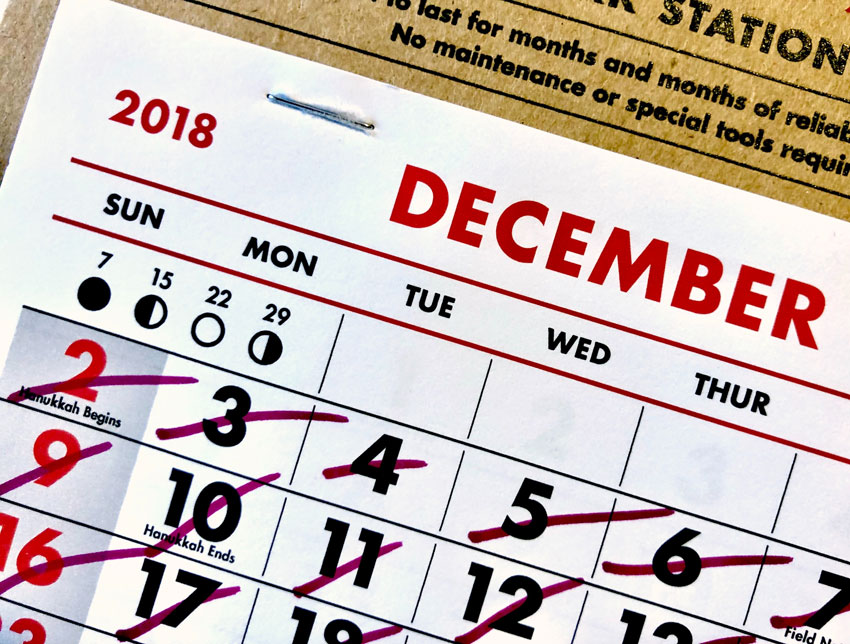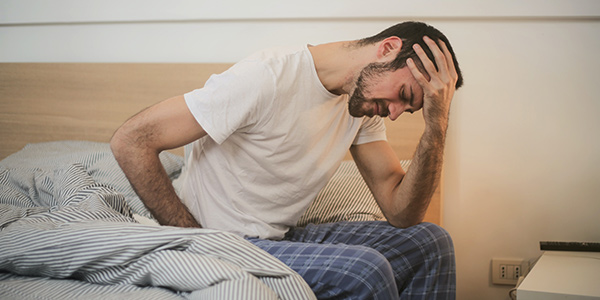Common and Rare Side Effects of Saxenda
Saxenda is a prescription medicine, and like all prescription treatments, it can cause side effects.
Most of the common side effects of Saxenda involve the gut but some people experience other symptoms shortly after starting Liraglutide.
Unfortunately, there’s no way of telling whether or not you’ll experience the side effects of Saxenda until you try it.
However, it does help to be aware of what you might expect when you start.

Some of the most common side effects of Saxenda that are listed in the patient information leaflet include;
- Nausea
- Vomiting
- Diarrhoea
- Constipation
- Indigestion
- Gastritis (inflamed stomach)
- Stomach discomfort
- Upper stomach pain
- Heartburn & acid reflux
- Hypoglycaemia (low blood sugar – more common with people that take medicine for diabetes)
- Bloating
- Wind
- Belching
- Dry mouth
- Feeling weak
- Feeling tired
- Changes in your sense of taste
- Dizziness
- Insomnia
- Gallstones
- Local reactions (bruising/redness around the injection site)
- Hair loss
Nausea, vomiting, diarrhoea and constipation happen to quite a lot of people at first.
These side effects can affect more than 1 in 10 people and are classed as “very common”.
The rest of the list above are classed as “common” side effects and may affect up to 1 in 10 people.
Some of the more uncommon side effects that are listed in the Saxenda leaflet include:
- Dehydration (usually fluid loss due to other side effects)
- Delayed stomach emptying
- Gallbladder inflammation
- Allergic reaction (including skin reactions)
- Feeling generally unwell
- Noticing that your pulse is faster
These uncommon side effects can affect up to 1 in 100 people that take Saxenda.
This means that most people don’t experience these symptoms when using Liraglutide.
However, it’s still important to be aware of them just in case.
Rare side effects that are listed include kidney issues, such as reduced kidney function, and acute kidney failure.
This doesn’t affect many people at all.
However, symptoms to look out for include reduced urine, a metallic taste in your mouth, and frequent/easy bruising.
Saxenda does have a couple of serious side effects listed that are also important to know about.
These include anaphylaxis (severe allergic reaction), and pancreatitis.
Pancreatitis is reported as “uncommon”, so may affect up to 1 in 100 people.
However, it’s something that does need urgent medical attention.
Symptoms to look out for with pancreatitis include:
- Severe abdominal pain that won’t go away. It may radiate into your back
- Nausea
- Vomiting
If you do experience these symptoms whilst taking Saxenda, you should seek medical attention urgently.
Although it’s uncommon, pancreatitis can be dangerous, so a medical exam is the best step to take.
Do Saxenda side effects go away?
The good news is that a vast majority of people find that the side effects do subside after a few weeks.
This is partly due to the titration period that should be followed with Saxenda.

Because of the side effects of Liraglutide, Saxenda doses should be increased gradually over the space of five weeks.
This is to reduce the severity of the side effects you might experience.
It’s important to stick to this titration period so that you’re able to tolerate the medication a bit better.
Once you’ve reached the therapeutic dose of 3.0mg daily, your side effects should start to subside.
However, if you find that you’re still struggling after a couple of weeks, you might need to reduce your dose.
If you’ve been prescribed Saxenda through myBMI, you can also get in touch with one of our prescribers.
As part of your package, you can also access supporting treatments to ease any side effects.
Whilst we can’t guarantee that there’ll be something suitable for everyone, our medical team will do their best to make sure that you have a comfortable weight loss journey.
There are also various things that you can do to reduce certain side effects.
For example, reducing your portion sizes can often help with feeling bloated or nauseous.
You should also make sure that you’re drinking plenty of water, this is particularly important if you’re vomiting or experiencing diarrhoea.
Dehydration can be the cause of many unpleasant symptoms.
Staying hydrated is often half of the battle!
Can you get withdrawal symptoms?
Liraglutide isn’t addictive, and it’s generally only addictive medicines that cause withdrawal symptoms.
However, some people can still be nervous about stopping Saxenda.
Some people are able to stop taking Liraglutide completely, but others may need to gradually reduce their dose over time.
This is similar to the titration period when you first start taking Saxenda, the opposite way round.
If you’re particularly nervous about stopping Saxenda, you should speak to your prescriber.
They might suggest weaning off slowly to see how you cope on a lower dose.
This might also give you enough time to make any adjustments to your lifestyle if you find that you’re gaining weight again.
There are no reported withdrawal symptoms associated with stopping Saxenda.
However, if your hunger increases, you may either need to continue taking Liraglutide or look at additional lifestyle changes you can make to avoid weight regain.
Can you stop and start Saxenda?
Saxenda has a fairly short half-life compared to Semaglutide.
Because of this, it’s much harder to miss a few days.
Liraglutide has a half-life of 13 hours, this means that if you miss more than a day or so of your injection, you may have to start again from 0.6mg.
It’s important to remember to take your injection at the same time each day so that you won’t have to restart.

Ideally, Saxenda shouldn’t be relied on frequently.
The idea behind using it is that you’re also making lifestyle choices to prevent weight regain.
If these lifestyle choices don’t work, then you may put weight back on and need to take Saxenda again.
Because of this, we recommend staying on it for as long as is necessary.
This should give you enough time to form new, healthy habits.
If you take Saxenda over a prolonged amount of time rather than in short bursts, you stand a better chance of maintaining your weight loss.
It’s important to remember that it’s prescribed to help people with obesity and shouldn’t just be used for casual weight loss.
If you do decide to restart Saxenda after stopping, you should speak to your prescriber.
Depending on how long ago you stopped, they may advise restarting on a different dose to what you were taking.
Can Saxenda cause kidney pain?
Kidney issues are mentioned are a rate side effect of Saxenda.
However, kidney failure itself doesn’t necessarily cause pain.
Some of the main symptoms you need to look out for with your kidneys include:
- Passing less urine
- Fluid retention
- Swelling in your legs, ankles, or feet
- Feeling short of breath
- Confusion
- Nausea
- Weakness
- Irregular heartbeat
- Chest pain
- Pressure in the chest
- Tiredness
If you’re experiencing any combination of the above symptoms, you should make an urgent appointment with your doctor.
This is especially true if you’re also experiencing pain in one of both sides of your lower back.
This is where your kidneys would generally tend to hurt.
Alternatively, you might also experience kidney pain if you’re dehydrated.
Dehydration can increase the concentration of your urine.
This can sometimes cause an overgrowth of bacteria that can cause an infection.
We would always recommend drinking plenty whilst you’re taking Saxenda.
It can help with a variety of side effects and also help to flush bacteria out and dilute your urine.

If you’re experiencing unexplained pain in your lower back, you should see your GP.
Even if the cause is unrelated to Saxenda, it’s always worth getting unexplained pain checked out.
Are there side effects when you stop taking Saxenda?
There aren’t any “side effects” as such when you stop taking Saxenda.
However, some people find that their appetite increases again.
This can sometimes happen if someone stops taking Saxenda before they’re ready.
However, others just need the medication in order to feel satisfied.
In order to combat this, we sometimes recommend a maintenance dose for people that need a little extra support.
This can be reviewed on a month-by-month basis depending on your progress.
One of the most important things to remember is that you should be aiming to stick to the changes that you’re making.
For example, if you start eating bigger portions when you stop taking Saxenda, you’re likely to gain weight.
If your hunger does increase, you can try eating certain fruits and vegetables to fill yourself up.
These are low in calories and can often keep you from feeling hungry.
Saxenda injection side effects
People that do experience sided effects when taking Saxenda usually find that they’re manageable or that they subside.
However, if you don’t feel any better even with treatment for side effects, you might need to consider other medications.
We would recommend that you stay aware of how you’re feeling and try not to eat past your limit.
This can help to reduce some side effects like nausea and vomiting.
If you still feel hungry after smaller portions, you can always eat some more food.
This is a much more comfortable option than feeling sick and bloated after a meal!
If you experience any other symptoms whilst taking Saxenda, it’s worth mentioning it to your doctor or prescriber.
This can help to keep you safe in case the medicine is causing any problems for you.
For more information about the side effects of Saxenda, please read the patient information leaflet.
















